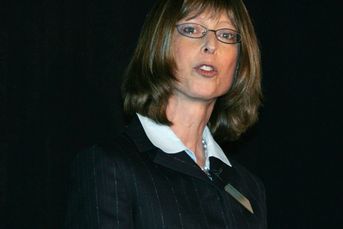Markets remain rocky; Asia looks appealing
Investors should prepare for a roller-coaster ride for the rest of the year as equity markets struggle to make headway.
Investors should prepare for a roller-coaster ride for the rest of the year as equity markets struggle to make headway.
In fact, volatility will make portfolio gains elusive and leave investors to face a “ground war for the next six months” in the global stock markets, said Jason Trennert, chief investment strategist at Strategas Research Partners LLC, an institutional research firm in New York.
“There is no more low-hanging fruit” in terms of easy money from the rebound in equities, he said.
Global stock markets will move slowly higher by yearend, but “in an awkward, volatile way,” said Bob Doll, vice chairman and global chief investment officer of equities at BlackRock Inc. of New York.
The impressive rally since March was simply the market “taking the Great Depression scenario off the table,” said Jeffrey Kleintop, chief market strategist with LPL Financial in Boston.
“Now, it’s going to be harder to add on to those gains” as the pace of good economic news slows, said Mr. Kleintop, who expects the Standard & Poor’s 500 stock index to trade at between 850 to 950 before hitting 1,000 by yearend.
However, market strategists prefer the emerging Asian markets because they offer the best opportunities for gains during the second half.
“We feel [Asian markets have] a lot of fuel left,” Mr. Kleintop said. “They’re not capital-constrained, they’re actually lending, and they’ve got growth and are beneficiaries of improving commodity prices.”
Economists at Credit Suisse Securities LLC of New York expect the growth outlook of most emerging Asian countries to improve in the second half.
In a report published last month, the firm revised its 2009 gross domestic product growth forecasts for the region upward to 4.7%, from 4.4%. For 2010, Credit Suisse raised its forecast to 7.3%, from 6.7%.
Credit Suisse maintained its 2009 GDP growth estimate for China at 8%, but revised its 2010 estimate to 9%, from 8.5%. India’s GDP growth forecast was set at 6.2%.
So far this year, such emerging markets as China and India experienced significant run-ups in stock prices — fueled, in part, by the huge sell-off in those markets last year. As a result, some investors are bracing for a retreat.
“Early this year, we were pounding the table” for investing in Chinese stocks, Andrew Barber, an Asia market strategist with Research Edge LLC of New Haven, Conn., said during a conference call this month.
He expects a pullback of 15% to 25% in the major Chinese indexes, with no changes in the fundamentals.
The GDP growth rate of 6.1% in the first quarter was China’s lowest in 20 years. That compares with GDP growth of 9% last year, 13% in 2007 and 11.6% in 2006.
Many analysts expect growing consumer demand in Asian countries to drive economic growth and push commodity prices higher.
But “we’re a little less sanguine” about the expected increase in commodity prices, said Brian Singer, the Winnetka, Ill.-based founder of Singer Partners LLC of Darien, Conn., a new investment advisory firm that will begin managing assets in August.
“Commodity prices can be very volatile with small shifts in demand,” said Mr. Singer, who formerly was the chief investment officer of UBS Global Asset Management Americas in Chicago.
Among the developed markets, the United States will be the first to respond to improving economic news because it has been the most aggressive in responding to the financial crisis, said Mr. Doll, who expects the S&P 500 to finish this year with a double-digit return.
But the markets will be volatile due to conflicting economic numbers and uncertainty, analysts said.
“We will see uneven economic data,” said Mr. Kleintop, who pointed to a Department of Labor report this month showing that a greater-than-expected 467,000 jobs were lost in June.
Like other market strategists, Jim Peters, chief executive of Allocation Group LLC in Birmingham, Mich., which manages $625 million in assets, expects to see positive economic growth during the second half.
“But we’re concerned there’s no sustainability behind it,” he said, citing concerns about an oversupply of housing, the deleveraging of consumers and continuing problems in the financial sector.
“It’s hard to come up with a scenario for a robust recovery,” Mr. Peters said. “But the market has factored in a positive outlook, so we’re defensive.”
The worst case for the stock market is GDP growth of 1% or 2% with rising inflation, Mr. Kleintop said.
“Stagflation, although not the most likely scenario, is our No. 1” concern, he said, referring to the combination of a soft economy and rising inflation. “It would be horrible for equity markets.”
Most observers expect expansionary monetary and fiscal policies to produce higher inflation either this year or next.
The Federal Reserve Board “has created a whole lot of money, but it’s not being loaned out, so it’s not inflationary yet,” Mr. Kleintop said. When loan demand comes back, inflation will be a potential problem, he said.
At present, inflation measures are hovering around zero, and deflation remains a concern, Mr. Doll said. However, as the Fed’s aggressive monetary policy takes hold, he expects to see inflation emerge in the second half.
Because of the inflation risk and low yields, few observers favor Treasury securities. But non-sovereign bonds that offer higher yields than government bonds are attractive investments. The spreads between investment-grade corporate bonds and Treasury bonds are beginning to narrow, said Doug Sandler, chief equity officer at Riverfront Investment Group in Richmond, Va., which manages about $750 million. As a result, investors may want to shorten maturities and reinvest in two to three years at higher rates, he said.
E-mail Dan Jamieson at [email protected].
Learn more about reprints and licensing for this article.





